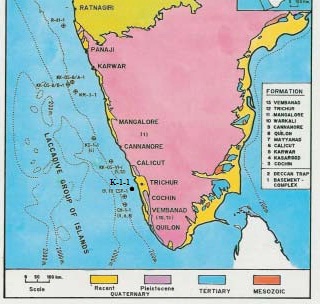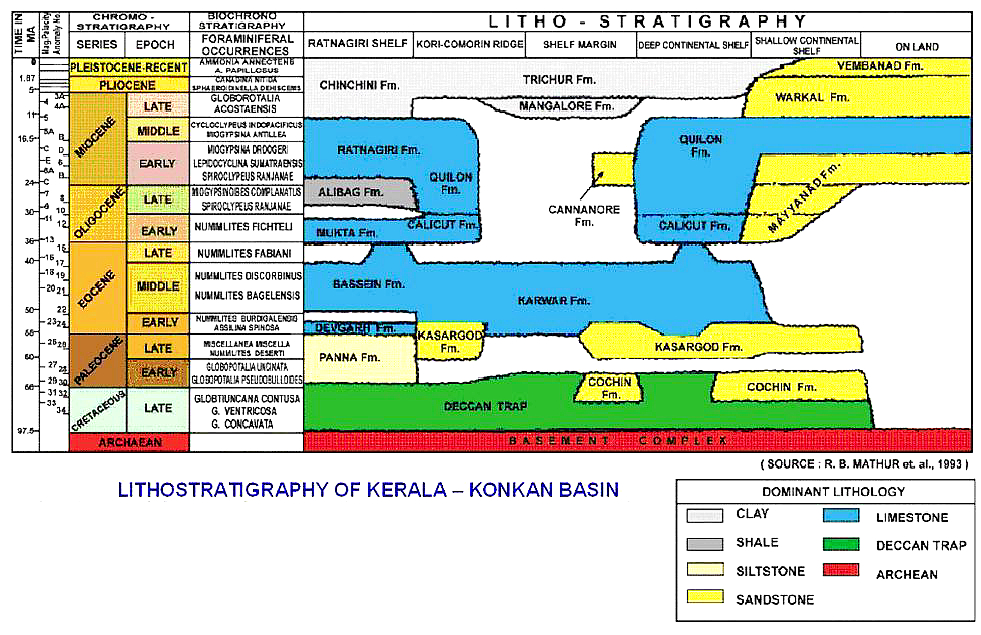Mayyanad Fm
Type Locality and Naming
OUTCROP and SUBSURFACE: This is the oldest outcropping sedimentary unit of Kerala. The name Mayyanad Fm was suggested by Desikachar (1976) for coarse- to medium-grained sandstones with interbedded white and grey clays and lignites in the coastal area of Kerela.
The type section is in the Well K-1-1, Interval is 448-695 m and thickness is 247 m. [Original Publication: Desikachar, S.V., 1976: Geology and the Hydrocarbon prospects of the Kerela west coast basin. Paper presented to the Workshop on Coastal Sedimentaries of India south of 18°N, ONGC, Madras.]
[Figure 1: Location map of type section (after J.Mishra in Raju and Misra, 2009)]
Lithology and Thickness
Coarse-grained sandstone. In the holostratotype this formation consists of well-sorted coarser to medium-grained, occasionally gravelly sands interbedded with dark clays and lignite. A few thin limestone bands are also present. The lower part of this formation laterally changes into carbonate facies of Calicut Fm beyond the shallow shelf.
[Figure 2: Lithostratigraphy of Kerala-Konkan Basin (from dghindia.gov.in)]
Relationships and Distribution
Lower contact
Lower boundary is unconformably over Kasargad Fm.
Upper contact
Upper boundary is unconformably underlying the Quilon Fm.
Regional extent
GeoJSON
Fossils
Nummulities fichleti, Nummulities vascus, Upper part is fossiliferous.
Age
Depositional setting
Shallow inner shelf to marginal marine and swampy environment.
Additional Information

